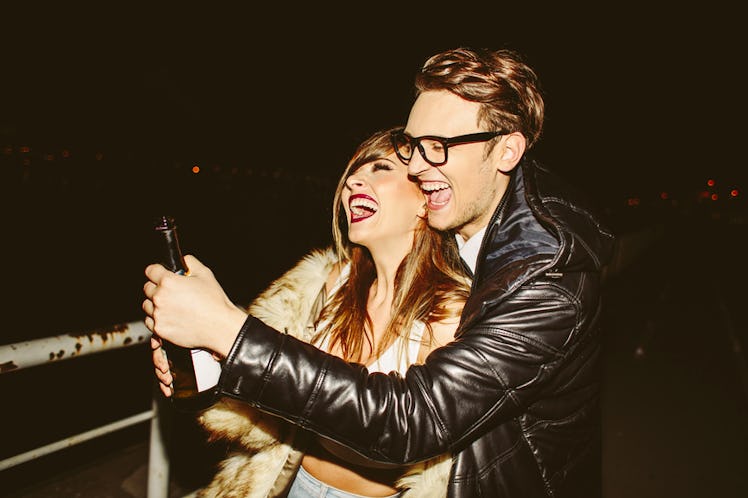
This Is Why We Welcome The New Year By Toasting With Bubbly Glasses Of Champagne
Every holiday has its own set of customs, traditions, and, TBH, drinking habits. But have you ever stopped and asked yourself, why do we toast with champagne on New Year's Eve? The truth is that drinking champagne to ring in the new year is a tradition that technically dates back over 1,500 years, although it really started to become popular only a few centuries ago.
Way back in the 16th century, Europeans were poppin' bottles as a way to celebrate events, but only the absolute wealthiest people drank champagne, as it was super expensive at the time.
After the French Revolution, champagne transformed from a religious beverage to a secular one, according to historian Kolleen Guy:
After the French Revolution, [champagne] became a part of the secular rituals that replaced formerly religious rituals.
You could "christen a ship" without a priest, for example, by using the "holy water" of champagne.
Wine of any kind has always been viewed as an "elite" alcoholic beverage, associated with notions of wealth and aristocracy.
But champagne was specifically considered a holy drink for elite society, and was eventually marketed as a drink of aspiration, which people used for celebratory events such as christenings and new year celebrations.
Fun fact: Drinking champagne also used to be a very dangerous affair, with bottles routinely exploding at random and shattering into shards of glass at the slightest movement.
But the true allure of champagne had nothing to do with its exploding, fizzy bubbles. Rather, it had to do with the fact that champagne is a very particular type of wine, with a certain set of restrictions regarding the location of the grapes and the entire fermentation process. When you buy champagne, you're buying into the science of this sparkling wine, which is every bit as structured and elite as the flavor itself.
It was between 1800 and 1850 that champagne's popularity and availability skyrocketed, with production of champagne bottles jumping from around 300,000 a year to 20 million bottles a year.
And that number hasn't dropped: Today, approximately 300 million bottles of champagne are sold each year.
Drinking champagne specifically on New Year's Eve is a tradition that some argue has existed since the time of Julius Caesar (although it must have been some seriously rudimentary champagne he was working with), but the actual notion of staying up until midnight to cheers with champagne didn't start until the 1800s.
By the end of the 19th century, champagne was a necessary staple at every New Year's Eve party, all thanks to a little New York restaurant called Cafe Martin.
Cafe Martin was a restaurant in New York run by two French brothers. which subsequently became the place to see and be seen. These brothers boasted a menu of 69 different types of champagne that they imported from France, and hosting a New Year's Eve celebration became one of the biggest and most profitable days of the year for them.
So, this all goes to show that, in any given context, a tradition can slowly but surely make its way to the mainstream through more than one catalytic event. For the United States, our celebration of the new year could be attributed to the effect that this popular restaurant had on the culture of New York City at the time, although you could also argue that the general types of advertising around champagne contribute to our understanding of the drink.
None of this is to say that you have to drink champagne on New Year's Eve in order to celebrate the holiday correctly. In fact, you really don't have to drink at all if you don't want to.
But if you do decide to throw back a few flutes of champagne, now you'll be able to make a toast that honors the true history of champagne to impress your party guests. Cheers!